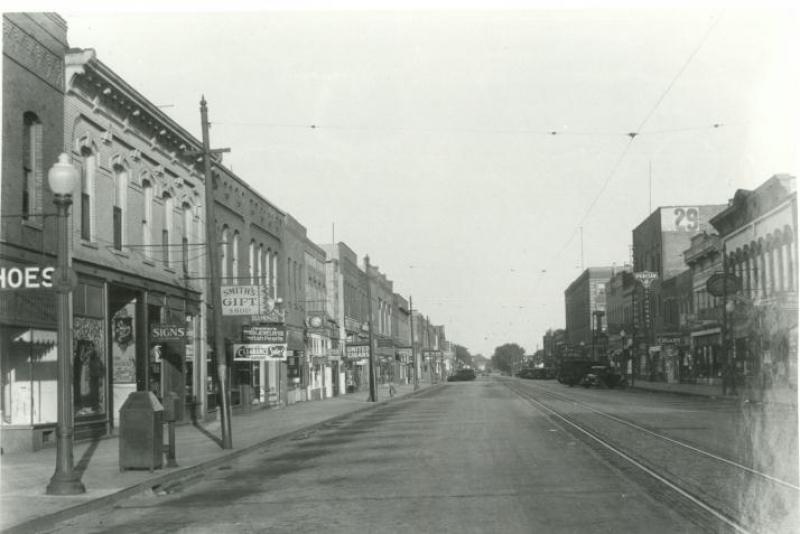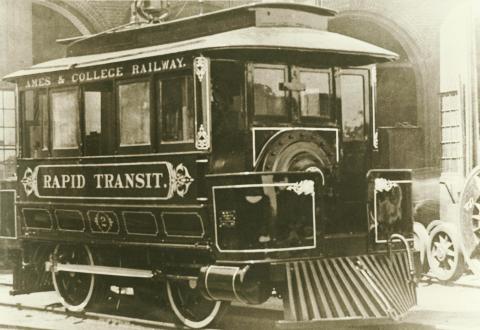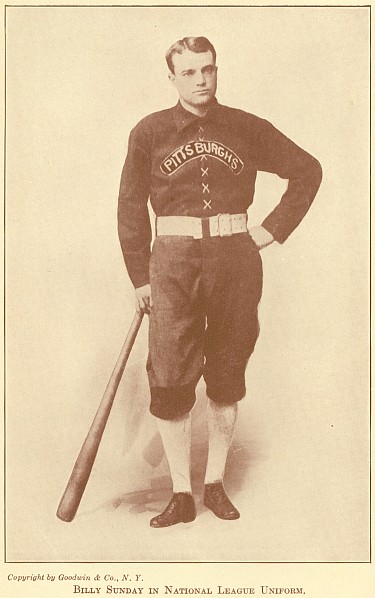
A look at downtown Ames looking west on Main Street from the Douglas Avenue corner from the 1920s or early '30s. (Provided by Ames Public Library)
What began as a platted piece of land in 1864, the city of Ames grew from its humble beginnings into a bustling university town.
With beginnings dating back to 1864, after the founding of what would later become Iowa State University, Ames has grown exponentially and offers a special history.
Here are four fun facts about Ames, its founding, and some bits of history you won’t find anywhere else in Iowa.
Ames was founded as a railroad town
In 1864, Ames served as a station along the Cedar Rapids and Missouri River Railroad, which spanned from Cedar Rapids to Council Bluffs and operated from 1860 to 1884.
It soon became more than a station along the railway thanks to the help of early settler Cynthia Duff and John Blair, the railroad’s president, who named the town after Oakes Ames, a railroad promoter and congressman from Massachusetts, according to the city of Ames’ website.
Ames was incorporated in 1870 with a population of 844 and was 12 city blocks, spanning from the railroad right-of-way north to Ninth Street to the east along Duff Avenue and to the west along Burnett Avenue.
Today, Ames spans about 24 square miles and trains still pass through town on the Union Pacific Railway.
Iowa DOT was founded in Ames
Originally part of the Iowa State College of Agriculture and Mechanic Arts, the Iowa State Highway Commission (IHC), later becoming the Iowa DOT, was established in 1904.
The IHC separated from the college in 1913 and became an independent state-administered organization according to the Iowa DOT’s website. It operated independently until 1974, when the Iowa Legislature created the Iowa Department of Transportation and IHC was incorporated into the organization. The Iowa Legislature also established the Iowa Transportation Commission in 1974.
Ames is still the hub of the Iowa DOT today at the Iowa DOT Headquarters, located at 800 Lincoln Way. In 2024, the old Iowa DOT building was demolished to make way for the Fitch Family Indoor Aquatic Center, 115 N. Elm Ave.
Street cars used to be primary transportation

Before there were cars, the main mode of transportation was by horse along dirt roads between Iowa State and the growing city of Ames — and so came “The Dinkey.”
A steam-powered railway known as “The Dinkey” carried street cars between campus and downtown Ames from 1891 to 1907, according to the Iowa DOT.
“The Dinkey” was repurposed in 1907, taken to Fraiser, Iowa, and new tracks and a new train depot on campus were laid down along with new electric trolley cars. In 1929, busing services replaced the need for the trolley.
CyRide, a busing service for Iowa State students and Ames residents, now replaces the need for trolley cars as public transit.
Baseball star, evangelist Billy Sunday was from Ames

Billy Sunday, born in 1862 in Ames, grew up playing baseball in Ames and Nevada, where he attended high school, but it wasn’t until 1883 that he was scouted by the captain of the Chicago White Stockings, which would later become the Chicago Cubs, while playing ball and living in Marshalltown.
He played in the major leagues for teams in Chicago, Pittsburgh and Philadelphia until 1890, when he started diverting his time to the Chicago YMCA and studied psychology at Northwestern University.
In 1896, he would give his first “stage performance” as an evangelist and would become one of the most influential preachers in the 20th century.
Even if you don’t recognize the man, the name might ring a bell: Billy Sunday Road runs on the southeast corner of Ames.